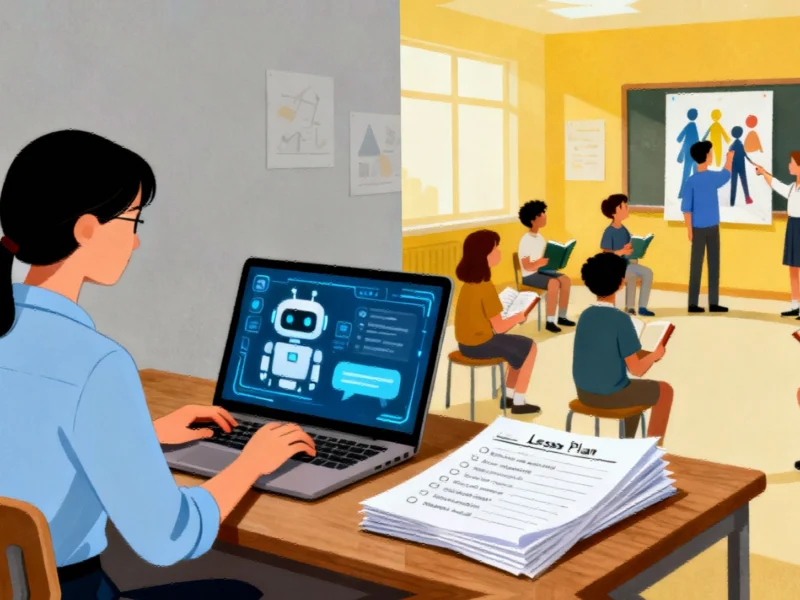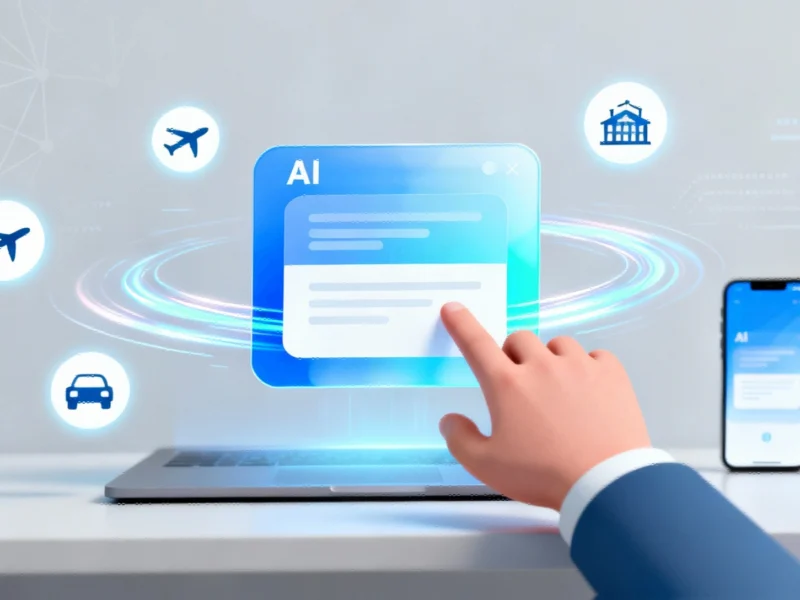The Promise and Pitfalls of AI in Education
As artificial intelligence continues to transform various sectors, its application in education has generated both excitement and concern. A recent comprehensive study reveals that AI-generated lesson plans, while time-saving, often fail to deliver engaging, immersive, or effective learning experiences compared to traditional methods. The research specifically examined civics education, finding that these automated plans frequently overlook opportunities for students to explore the stories and experiences of traditionally marginalized groups.
The appeal of generative AI as a teaching assistant has captured educators’ attention nationwide. According to a Gallup survey from September 2025, 60% of K-12 teachers now incorporate AI into their workflow, with lesson planning being the most common application. This trend reflects broader industry developments in computational technology adoption.
Methodology: Analyzing AI-Generated Content
Researchers collected and examined 311 AI-generated lesson plans featuring 2,230 civic education activities from three prominent chatbots: ChatGPT’s GPT-4o model, Google’s Gemini 1.5 Flash, and Microsoft’s Copilot. The study, conducted in August 2024, requested both standard and highly interactive eighth-grade civics lesson plans aligned with Massachusetts state standards.
The analysis employed two established educational frameworks: Bloom’s taxonomy and Banks’ four levels of integration of multicultural content. These tools helped researchers evaluate the cognitive complexity and cultural inclusivity of the generated materials, revealing significant shortcomings that parallel concerns in other market trends where automation may overlook nuanced requirements.
Critical Thinking Deficiencies
When assessed using Bloom’s taxonomy, which distinguishes between lower-order and higher-order thinking skills, the results were striking. 90% of activities promoted only basic cognitive processes, focusing on memorization, recitation, summarization, and application rather than analysis, evaluation, or creation. Students using these materials would primarily learn civics through rote memorization rather than engaging in critical examination of civic issues or participating in civic action projects.
This limitation reflects the fundamental nature of current AI systems, which excel at pattern recognition but struggle with fostering genuine critical thinking. The findings suggest that while AI can assist with administrative tasks, it cannot replace the nuanced understanding that human educators bring to lesson development, similar to how related innovations in other fields require human oversight for optimal implementation.
Multicultural Content Gaps
The examination using Banks’ multicultural content model revealed even more concerning limitations. AI-generated civics lessons presented a narrow historical perspective that frequently excluded the experiences of women, Black Americans, Latinos, Asian and Pacific Islanders, disabled individuals, and other historically marginalized groups. Only 6% of lessons included substantive multicultural content, and these typically focused on superficial representations like heroes and holidays rather than deeper explorations of diverse perspectives.
This deficiency stems from the training data used for these AI systems, which draws heavily from internet sources that may underrepresent minority voices and experiences. The result is lesson plans that fail to prepare students for engaged citizenship in a diverse democracy, highlighting the importance of human curation in educational content creation, much like how recent technology implementations benefit from localized adaptation.
Broader Implications for Educational Technology
The study’s findings have significant implications for how educators approach AI integration in their classrooms. While these tools can generate detailed lesson plans in seconds—complete with learning objectives, materials, activities, assessments, and homework—they lack understanding of actual students or real classroom dynamics. Teachers risk relying on technology not designed to enhance teaching and learning when they use these tools without critical evaluation.
From a technical perspective, chatbots like ChatGPT, Gemini, and Copilot are essentially prediction machines that generate text based on statistical patterns in their training data. They don’t understand educational context, student needs, or pedagogical best practices. This limitation becomes particularly evident when comparing AI-generated content to materials developed by experienced educators who can adapt to specific classroom situations, similar to how industry developments in medical technology require careful implementation.
Recommendations for Effective AI Use
Despite these limitations, the researchers don’t recommend abandoning AI tools entirely. Instead, they advocate for a more strategic approach where teachers use AI to augment rather than automate their lesson planning. The study found occasional interesting activities and stimulating ideas within the AI-generated materials, particularly in homework suggestions, indicating potential for inspiration rather than direct implementation.
Teachers can improve outcomes by crafting detailed, context-rich prompts that specify educational frameworks and inclusion requirements. For example, instead of requesting “Design a lesson plan for the Constitutional Convention,” educators should provide comprehensive instructions that incorporate Bloom’s higher-order thinking skills and Banks’ multicultural integration levels. This approach mirrors how professionals in other fields use AI as a collaborative tool rather than a replacement for human expertise, much like market trends indicate across various industries.
Future Directions
The research emphasizes the need for teachers to become critical users rather than quick adopters of AI-generated educational materials. Professional development opportunities should focus on helping educators understand both the capabilities and limitations of these tools, enabling them to leverage AI effectively while maintaining educational quality and inclusivity standards.
Future research should explore whether specialized AI tools trained specifically on educational best practices and diverse perspectives might yield better results. Additionally, as related innovations in computing continue to evolve, the education sector must remain engaged in conversations about ethical AI implementation that serves all students equitably.
Ultimately, the study underscores that AI is not an all-in-one solution for education. While it can save time and provide starting points, effective teaching requires human judgment, cultural competence, and the ability to respond to students’ unique needs and interests—capabilities that current AI systems cannot replicate.
This article aggregates information from publicly available sources. All trademarks and copyrights belong to their respective owners.



